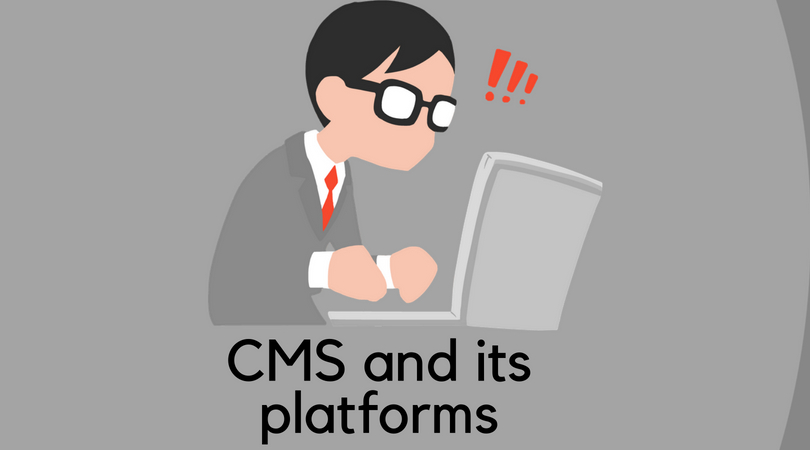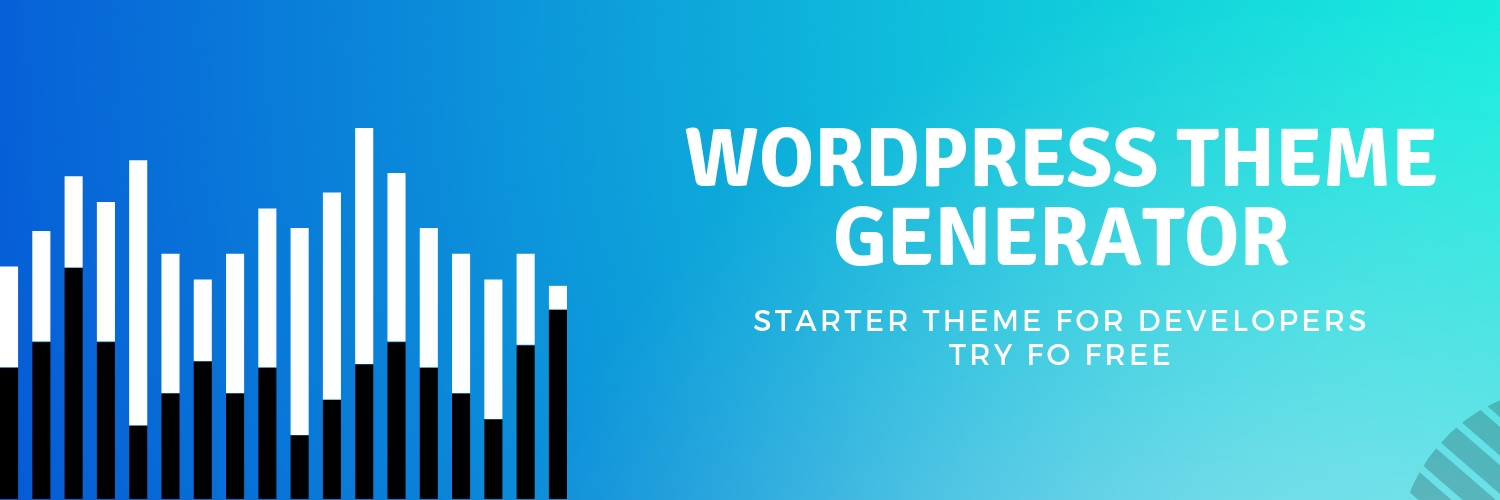Content Management System, abbreviated and fondly known as CMS includes a different set of software compatible with the respective programming language. Let’s acquaint ourselves with different kinds of CMS and their respective programming languages.
Operating On PHP
WordPress:
This is the first and the basic content system that anyone would’ve heard of. Such is the kind of popularity this system has gained over the years. Using the PHP language, this has been the most acclaimed one yet. Having said that, WordPress is also the easiest to use and fairly easy to comprehend if one is new to this field.
A few years ago, WordPress was at the peak of the debate, where everyone was in a dilemma if WordPress is a blog or a CMS. It didn’t take too long for the WordPress to rule over the non-blog websites as well. WordPress now powers even the non-blog sites. That’s the kind of reach this WordPress has. It has been updating its widgets time and again and has a great stack of useful widgets and plugins that are fairly useful to its users. With the increase in the number of tutorials simultaneously, WordPress has reached a wider audience than any other CMS ever had. So WordPress isn’t something that one could just write off, it’s here to stay.
Advantages:
- Has a feature for WYSIWYG that helps you in understanding how your content would be portrayed. It’s even helpful for those with no knowledge of HTML
- Easy to use and takes minimal time in understanding.
- Free and paid plugins are available at a very optimal price.
Drupal:
The other kind of CMS that operates on PHP is the second best one for the users. This is also a very active CMS used widely by the users all over the world. This free content management system is known for its number of plugins and the active community it has. Drupal has over 6000 plugins which is a huge number for any CMS. This not only helps in saving time from all those development of new plugins but also saves a lot of money.
It has about 30,000 extendable modules and also 2,500 of unique themes that you can use to build your website to a whole better level. That’s the kind of perk one can have with this. Also, the active community it has keeps updating its users on different types of plugins or other upgrades.
Advantages:
- Drupal has about 30,000 extendable modules and 2,500 themes. Which can be fairly used for customization.
- It offers a huge active community that can help you with your situation all time of the day
- Advanced features such as maintaining your own cloud are possible with Bitnami Stack.
Joomla:
This is one more of those CMS’ in the PHP platform that is widely acclaimed by many people around the world. Even this has a multiple number of followers and a huge community that helps you with your doubts and also the tutorials. This CMS is used by giants like MTV, Harvard University, CitiBank etc. The fairly active community also offers a lot of plugins and widgets that are developed by random people. This goes a long way in making several tasks easier for these people. Some of them are paid and some are free but as far as I can see all of them are quite affordable.
Advantages:
- A large community and number of followers to help with the required learning and doubts.
- Very user-friendly to a particular set of users.
- 3,200 extensions to show how alive this CMS is.
Operating On Java

Alfresco Java:
Developed by ex-guys from Documentum, this system has a lot to offer a lot when it comes to CMS. Surprisingly easy to install and the ability to drop files into folders and later publish them into web documents is the feature anyone would love to use. This not only saves time but effort as well. The software, licensed under LGPL, is available for a free download. Alfresco is often suggested to be used for the enterprise sites than the simple sites.
Advantages:
- The backend is clear and simple.
- Can drop the file into folders and turn them into web documents.
- Has a lot to offer in terms of power.
OpenCMS:
This CMS has been around since 2000 and has been used consistently. The reason why it has been in this field for so long is it’s user interface and accessibility. This system can be used by even the most naive, with no technical skills whatsoever. If you need an easy to use and better looking CMS then this would be the best choice for you. Its user interface is based on Bootstrap CSS version 3. If you want to explore more, then new modules can be developed using Spring MVC, JSF, and Groovy.
Advantages:
- The first advantage with this is that it’s really easy to use and can be accessed even by a person with no technical skills
- It has a drag and drop feature that makes it easy to drop files
- Its official website is full of all the tutorials and guide if you need an answer to the question.
Magnolia:
The best part about any application or system is when it has a wider reach and can help in supporting multiple fields. If you need a one-stop solution to all your requirements on a Java platform, then this is for you. It sports a hub integrating areas such as e-commerce, analytics, marketing automation, social media, CRM and ERP. The advantage from this is that you can actually keep adding these, one after the other as your business grows.
The security of this CMS is quite tough and has been known for its encryption from private to the public data. If you’re the admin, then you can even know who has been updating, editing or writing or using this CMS for any other purposes.
Advantages:
- Highly secured
- Has a wide reach towards multiple business hosting
- Has a good number of results on stack-overflow
Python Based

Django CMS:
Django CMS has been around since 2007 and is an open source enterprise content management system based on the Django framework. This one’s the most user-friendly out of all the others and is easy to use. You can integrate different already- existing applications of your enterprise through this.
Advantages:
- Easy to use and user-friendly
- Widely used on Python
- You can edit all the plugins within the page
Wagtail:
It is an open source, Django based CMS. This one might take a little while before you get used to it, but has a wide variety of features that help you in making the tiniest of the changes and customize it to your own desire. The other reason why you could go with this is because it loads really fast and barely takes any time.
Advantages:
- Very responsive UI
- Quick loading of a page
- Endless customization
Mezzanine:
Built using the Django framework, this CMS is fast, flexible and consistent. The highly active community shows the kind of importance this system gets. The highly active communities, that’s alive almost all the time of the day helps not only in keeping you updated but also helps you in understanding a few features and methods you’re not aware of earlier. You can be updated on all those new widgets and plugins that might make it easier for you to build a better page.
Advantages:
- Highly active community
- A very flexible system and has multiple options to deal with
- Always updated on new extensions
.Net based

Umbraco:
Is one of those programs that are flexible and easy to use not just by the developers but also by the content writers. You don’t really need to have sound technical knowledge if you want to get in here. This program can be used by the tiniest of the sites to the big sites that stores a lot of data and is used worldwide. Such is the reach of this CMS. If youw ant to use a CMS on your.net platform, then this open source(Free) program should be the one you could go with.
Advantages:
- Has a large community where you can find free and paid tutorials and support
- Powerful and flexible for both websites and intranets
- An open source API
DNN:
DotNetNuke, also known as DNN is one of those few programs, that’s free and yet easy to install and is flexible. Powering over 800,000 websites worldwide, this CMS has it all if you want to go with a reliable source. The figure itself would give you an idea on how productive and happening its communities would be. It has some highly intereactive and developed web portal taht allows you to communicate all your thoughts and experiences.
Advantages:
- the huge figure of websites working under it show how happening this is.
- Continuous updates on the plugins
- Stable and easy to install
Kentico:
This CMS is available both on free and paid versions. Kentico offers you a complete set of features with details on how to build a website and how to upgrade it and further more. With 400+ built in web parts, Kentico proves to be one of the most customizable and flexible program out there.
Advantages:
- Multiple web parts of over 400
- Strong community
- SEO supported program
These are some of those programs you can go with depending upon the language you work in. To be honest, there’s no best or worst in this CMS. Different people have different likes and they get along with different features than others. So it depends on you, which kind of a CMS you want to go for.







